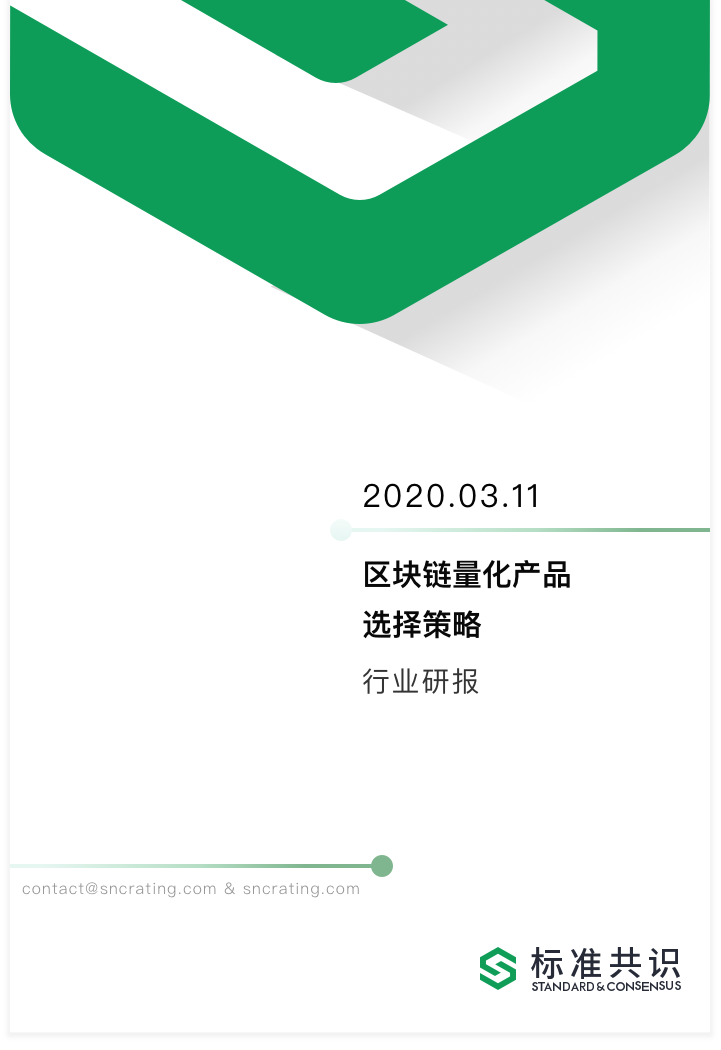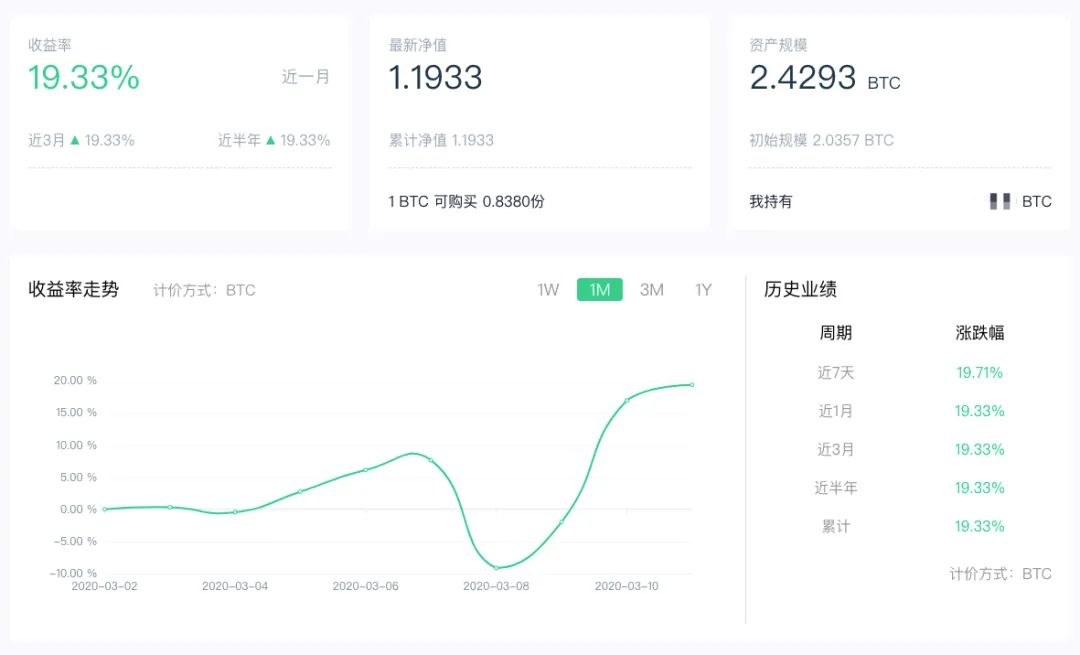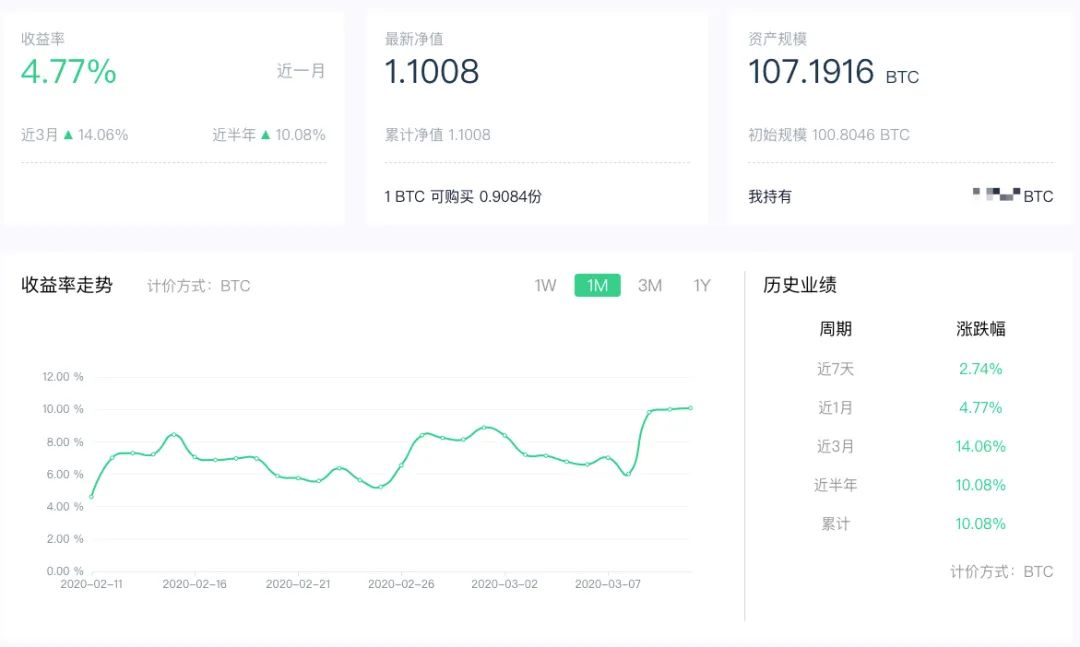Research | Blockchain Quantitative Product Selection Strategy

Overview
Market trading itself is a rather boring and extremely professional job. If investors want to make a profit from trading on their own, they need to invest considerable energy, so it is relatively safe and possible to give it to professional people to operate. Method of return. This article will briefly introduce investors how to determine what kind of fund product or quantitative product is more suitable for you.
Report
Investor risk appetite division
According to the different risk appetite of investors, the investment behaviors are different, so there is a division of investor types.
- Conservative. Conservative investors have extremely low risk coefficients, with capital security as the mainstay. The purpose of their financial management is more about maintaining value than increasing value.
- Robustness. Steady investors have a neutral risk appetite, they have a certain risk tolerance, and they have paid some attention to the security of the principal while pursuing stable profits. Steady investors prefer products with moderate risks and moderate returns.
- Balanced. Balanced investors are more rational. They neither seek risk nor abhor it. Compared to the former two, the pursuit of returns for balanced investments is relatively high.
- Aggressive and aggressive. These two types of investors have the highest requirements for income, usually more than 10%. They understand and can accept the high risks associated with high returns.
Investors can choose a yield product that meets their requirements only when their risk appetite is clear.
Judgment dimensions of funds or quantitative products
Each fund or quantitative product will have its own unique profit and loss cycle because of different strategies and different risk appetites. This article will help investors determine the overall situation of funds or quantified products from 3 large dimensions and 12 small dimensions, and help investors choose the investment target that is more suitable for their risk appetite.
- Economic bandwidth without trust: why Ethereum is irreplaceable
- Vitalik: Ethereum state explosion problem, polynomial promise solution can solve
- How to correctly understand DAO tokens?
Manager qualifications
The qualifications of managers can determine the credit risk, investment style, and stability of funds or quantified products. An excellent manager can help investors obtain relatively stable returns in an unpredictable market, and his past investment experience will also play a very important role in his current fund or quantitative product operation.
Total management scale
The total management scale is mainly focused on two points. The first point is the magnitude of the scale of funds managed by the manager. The larger the total scale of fund management, the higher the investor's trust in the manager and the credit The lower the risk. The second point is to pay attention to how many funds or quantified products the manager has managed. This is not as much as possible. Managing too many funds or quantified products may distract the manager's attention, causing the manager to fail to focus on a certain fund or Quantify the operation of the product so that it cannot achieve the desired yield and stability.
Manager's background and years of employment
The manager's background shows the manager's professional ability and operating style. Help investors choose the management style that suits them best. Managers with a class background generally have a solid theory and a stable style. Managers who break out of market trading practices will be more aggressive, and like to go away. The style of the manager will be reflected in the operation of the fund, so investors understand the background of the fund manager in order to choose a style that suits them. The manager's working life is to judge the manager's market experience. A manager with rich market experience will be more rational in the face of unpredictable market trends and make better quality judgments, which can ensure the entire fund. Or quantify the stability of product operation.
Manager historical data
From the manager's historical data, the manager's investor style and profitability can be judged. At present, the investor strategies of China's private equity industry can be roughly divided into eight types: stock strategies, macro strategies, portfolio strategies, compound strategies, event-driven, relative value, managed futures, and fixed income. These strategies are also common in the digital currency market. Therefore, different strategies have different investment targets, different holding periods, and different performances. And when observing the historical data of the manager, it is necessary to enlarge the observation period. Longer-term performance can explain the problem, but also the return of the relative index. A good performance in a bull market may not indicate how strong the manager's profitability is. But in the big bear market, the performance is still outstanding, then the manager will be sought after by market investors.
basic situation
The basic situation of a fund or quantified product is to judge the investment style and income of the product in a more specific way.
Asset size of funds or quantitative products
The asset size of a fund or quantified product can judge the investment style of the product to a certain extent. The larger the asset size, the more the investment style will tend to stabilize the income type, and the smaller the asset size, the closer it will be to the fund's. Trading style. At the same time, the higher the proportion of the asset size of the fund or quantitative product to the total asset size managed by the manager, the greater the energy invested by the manager, and the closer the product will be to the manager's investment style . As shown in the following quantitative product varieties, the net value of products with a management scale of more than 2 BTC fluctuates greatly, while the net value of products with a management scale of more than 100 BTC fluctuates less, but the yield rate will be weaker than the net value. Small product.


Asset allocation direction
The digital currency market itself is a market with large market price fluctuations, and the price fluctuations of small currencies are even greater. So to some extent, the asset allocation indicates the degree of radicalization of the fund or quantitative product. During the transaction process, the risk and return are directly proportional. Therefore, if a product chooses a large proportion to invest in a small currency, the product's return and return Withdrawal will fluctuate significantly, and these products are more suitable for active and aggressive investors.
Revenue situation
The most intuitive manifestation of the quality of a fund or a quantified product is the return situation, and the return situation is usually expressed in two aspects, one is the unit net value of the product, and the other is the cumulative net value of the product. Net unit value refers to the net value of each share of the product, which is equal to the total assets of the fund minus the total liabilities divided by the total number of fund shares. Cumulative net value is based on the unit's net value plus the cumulative dividend and split amount since the fund was established. By observing the unit net value and cumulative net value, the profitability and willingness to pay dividends of the product can be clarified. However, in the observation process, the observation period should be extended as much as possible. The longer the period, the better the actual ability of the product can be fully expressed.
Login standard consensus quantification platform time period
The standard consensus quantification platform is a real API that accesses funds or quantitative products to help investors perform third-party monitoring and observation. Unlike some other quantitative product display platforms, they only help product promotion and promotion, do not get real data, and lack credibility. Therefore, the longer the time period for the product to log in to the standard consensus quantification platform, the more it can determine the authenticity and stability of its data, and prove its benefits and risks. And the longer the time period for the fund or quantitative product to log in to the standard consensus quantification platform, the lower the credit risk of the product, and all the returns and risks are determined by the manager's investment style.
Comparison with other investment target trends
Simply looking at the return of a fund or a quantified product is difficult to reflect the true performance of the product, and it needs to be verified by comparison with other products with the same investment style and market indexes. A good performance in a bull market may not necessarily indicate how strong the manager's profitability is, but in a big bear market, the performance is still outstanding, then the manager will be sought after by market investors. Buffett once said that he didn't know who was swimming naked after the ebb, so investors must focus on the relationship between the product and the overall market, rather than focusing on the product.
Risk appetite
Risk appetite is to help investors judge the risks you may take if you choose to invest in a fund or quantified product. When investors understand the risk profile of the fund, it is more helpful for the next investment decision.
Maximum retracement in the past year
Push back at any historical point in the selected period, and the maximum value of the rate of return when the product's net value reaches the lowest point. The maximum drawdown is used to describe the worst possible situation after buying a product. The maximum retracement is an important risk indicator. For hedge fund and quantitative strategy trading, this indicator is more important than volatility.
Volatility in the past year
Volatility is the degree of fluctuation of the price of financial assets. It is a measure of the uncertainty of the rate of return on assets and is used to reflect the level of risk of financial assets. The higher the volatility, the more violent the price of financial assets, and the greater the uncertainty of the return on assets; the lower the volatility, the smoother the volatility of financial asset prices, and the greater the certainty of the return on assets.
Earnings retracement ratio in the past year
The fund retreat rate and the fund return rate are generally used together, and belong to the category of fund win-loss ratio. It depends on the fund return rate. It also depends on the fund retraction rate. If the fund return rate is 85%, the retracement rate 10%, then the ratio of return to retreat: return on funds / return on funds = 8.5, the ratio is ideal, the larger the ratio, the stronger the profitability of the product.
Leverage ratio of funds or quantitative products
The leverage ratio of a fund or quantitative product is to help investors determine the investment style of the product's investors, whether it is aggressive or conservative. The higher the leverage ratio, the more aggressive the investment style of the product, the higher the corresponding risk. . The lower the leverage ratio, the more conservative the investment style of the product, and the corresponding returns may not be particularly high. This makes it easier for investors to choose the one that fits their investment objectives.
Conclusion
Investors need to clearly determine their risk appetite, choose a fund or quantitative product that meets their risk appetite, and the relevant data of the fund or quantitative product can basically express the investment style of the product. With the continuous development of the market, more and more products will be launched and displayed to investors, and the counterparties in the market will become more and more professional.
risk warning:
- Beware of illegal financial activities under the banner of blockchain and new technologies. The standard consensus firmly resists the use of blockchain for illegal fundraising, online pyramid schemes, ICOs, various variants, and dissemination of bad information.
We will continue to update Blocking; if you have any questions or suggestions, please contact us!
Was this article helpful?
93 out of 132 found this helpful
Related articles
- Data Increment: New Business Opportunities for Enterprise Services + Blockchain
- DeFi pattern or big change, Tether announces entry into DeFi, integrates Lightning loan agreement Aave
- Is individual mining a thing of the past? Mining these coins in 2020 is still profitable
- QKL123 market analysis | Crypto assets are highly correlated, and Ethereum wants to go independent? (0311)
- Why doesn't Bitcoin look like a bull market?
- What is the reason for the Bitcoin crash? The decline in the traditional market, or the sale of PlusToken
- YouTube cryptocurrency ban strikes again, this time they deleted two videos





